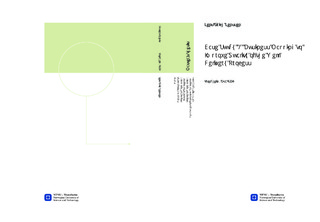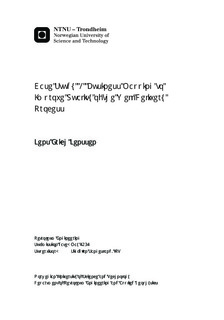| dc.description.abstract | The importance of building a robust oil and gas company is currently more relevant than ever. Volatile oil prices, challenging governmental relations and uncertain outcomes of exploration activities are all elements affecting operating companies in the global oil and gas industry. Another important element is the cost of upstream services, which has increased dramatically since the beginning of the new millennium. There are no reason to believe that future challenges will be any easier to overcome. Simultaneously, the global community is in need of more energy to meet the predicted increase in demand. It is therefore important for operating companies to focus on increased recovery and secure safe and effective operations. By emphasizing quality in the well delivery process (WDP) operating companies can reduce time spent on planning wells, accelerate pro- ject development and increase focus on safety. A high quality WDP can secure proper technology assessment, process ownership, staff accountability, improve allocation of key resources and secure continuos improvement. With a properly functioning WDP future well projects can be delivered in an improved manner, thus helping operating companies build a robust organization able to meet an uncertain future. This study has analyzed the WDP of an operating company located in the Middle East with emphasis on revealing existing challenges. The findings have been compared to a base case WDP of an operating company located on the Norwegian Continental Shelf (NCS). Based on analysis and lessons learned from the NCS improvements have been suggested. The WDP defines the set of activities in place to plan, execute and deliver a well. The process is important as it secure the presence of several critical elements during well planning and drilling operations. It must be able to secure participation of experienced employees, cooperation between important departments, use of technical solutions and documentation of lessons learned. The difference between a well functioning and poorly functioning WDP can be severe. A poor process will reduce HSE focus, fail to secure use of new drilling technology, increase costs and lead to an inecient allocation of resources. Several challenges reducing the quality of the WDP of the OME were revealed during the analysis. A high number of change orders combined with a lack of processes to deal with change reduce the quality of the WDP significantly. Other important challenges discovered include lacking interdisciplinary communication, insucient focus on conti- nuos improvement and absence of process ownership among employees in the drilling and well department. In addition, a lack of formal decision points to support the WDP was revealed. The study also found similar challenges between the WDP’s of the two companies. It was revealed that both operating companies use deviating targets and performance indicators that compromise cooperation. Companies also experience difficulties in com- municating lessons learned, challenges with an insucient supply of drilling rigs and a scarcity of qualified personnel. This reduceS quality of the WDP and increase risk. A greater number of challenges in the WDP were discovered for the operating company in the Middle East. As oppose to the operating company on the NCS, the operator in the Middle East has little or no focus on implementing lessons learned and lack process ownership among employees. The OME also lack a dynamic planning regime and has an insucient focus on HSE. Several opportunities for improving the WDP of the operator in the Middle East were discovered during the study. Suggested improvements include establishment of cooperation forums to enhance flow of information and increase collaboration between the field development and drilling and well department. It is also suggested to implement rigid processes and revise the use of targets and performance indicators. KPI’s that favor cooperation across departments should also be established. Based on lessons learned from the NCS it is suggested to implement decision gates to support existing processes. It is also recommended to establish post activities and implement dedicated change management process steps. This will support lessons learned and increase the focus on managing risk and uncertainty in the WDP. The suggested improvements will increase the quality of the WDP. They will help secure process ownership and staff accountability, reduce time spent on planning the well and accelerate project development, increase safety aspects, improve allocation of key resources and secure continuos improvement. The study also analyzed future opportunities and challenges in the two regions using a PESTEL-analysis. Future opportunities in the Middle East include elevated political influence as an increasing part of remaining global oil and gas resources will be located in the region. Future challenges include an increase in resource complexity, volatility in the political environment and diculties in attracting the necessary expertise and technology. Common opportunities for the two regions include future predictions of high oil prices, technological progress making previous unavailable resources available, improved carbon capture and storage (CCS) methods to mitigate the environmental impact of the industry and opportunities as a result of an increased focus of the importance of providing energy to the global community. Common challenges include the chance of oil and gas becoming redundant and a strong dependency on prices of hydrocarbons. This makes regions vulnerable for a decline in oil and gas prices. Suggested future work includes analysis of the WDP in an increased number of operating companies to confirm or invalidate the presented findings. It would also be interesting to investigate the use of incentives and performance indicators and analyze their effect the WDP. Studies investigating methods to improve eciency in drilling and well operations are also interesting. It is also suggested to compare average recovery rates in oil and gas regions and investigate reasons for any existing differences. | nb_NO |

